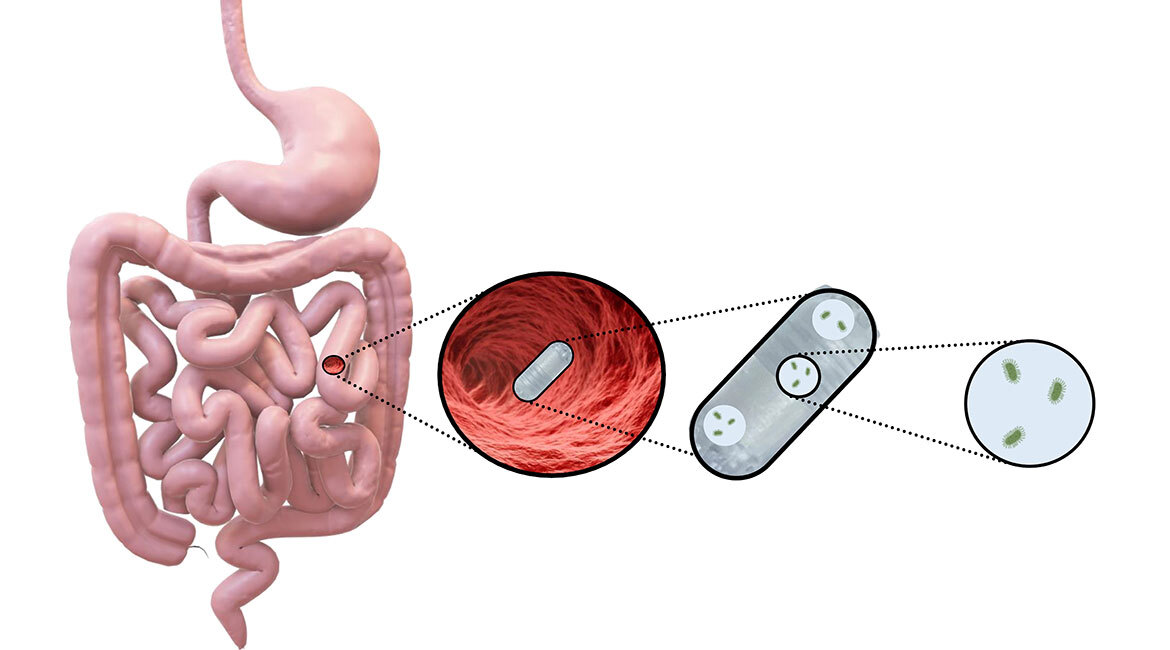Cultivating Health-Enhancing Bacteria

Image is from the author.
A Hidden Potential
Trillions of interacting bacteria known as the microbiota are present in the human intestine. This complex, dynamic ecosystem is unique in each individual, and is subject to transformation by diet, hormonal changes and many other factors. The gut is a changing environment, evolving in time and space, while maintaining an intrinsic relationship with the immune system. An unbalanced microbiota is not only associated with certain diseases like cancer, but can also interfere with their treatment.
The bacteria making up the microbiota secrete substances with a high potential for activity against infection, inflammation and cancer. This therapeutic source has garnered little scientific attention to date, but could lead to a new era of discovery in medication.
However, cultivating these bacteria poses serious challenges. Conventional techniques to isolate and incubate these bacteria have only succeeded in growing a very small portion (around 1%), leaving the rest in the dark. Indeed, the gut environment is literally impossible to reproduce in a laboratory due to chemical exchanges between same and different species, variations in nutrient and mineral supplies, and transformations in this complex environment.
A Bacterial Adaptation Pod
 In our laboratory, we are seeking to create culture technologies in situ—i.e. within the human body—to circumvent this obstacle and increase our knowledge of human microbiota interconnectivity. Our aim is to isolate certain cells and seed them in a pod. These ingestible pods would provide a protective environment for the incubated cells, enabling them to exchange signals while preventing inside to outside cell migration and vice versa. The pod would isolate them while providing an optimal environment.
In our laboratory, we are seeking to create culture technologies in situ—i.e. within the human body—to circumvent this obstacle and increase our knowledge of human microbiota interconnectivity. Our aim is to isolate certain cells and seed them in a pod. These ingestible pods would provide a protective environment for the incubated cells, enabling them to exchange signals while preventing inside to outside cell migration and vice versa. The pod would isolate them while providing an optimal environment.
To promote the culture of slower-growing cells, hydrogels or other biomaterials can be inserted into the capsule to isolate bacterial strains from one another. Our preliminary results show that both approaches are more effective than laboratory cultures.
The Challenges
The first difficulty in encapsulating microbiota bacteria is their low tolerance to oxygen (strictly anaerobic microorganisms). The slightest exposure to air poses a risk to their survival. Thus, capsule porosity must be well designed: the capsule must prevent outside bacteria from penetrating, while allowing the signals emitted by the bacteria to communicate with the outside. It should be noted that the intestines are a very difficult environment, with mechanical constraints and pressures to withstand. The capsule must therefore be robust, despite its porosity.
Conclusion
Treatments for various pathologies are waiting to be discovered… well hidden in our intestines. Harnessing the microbiota requires more efficient cultivation techniques, in order to explore the diversity of this highly promising environment.


